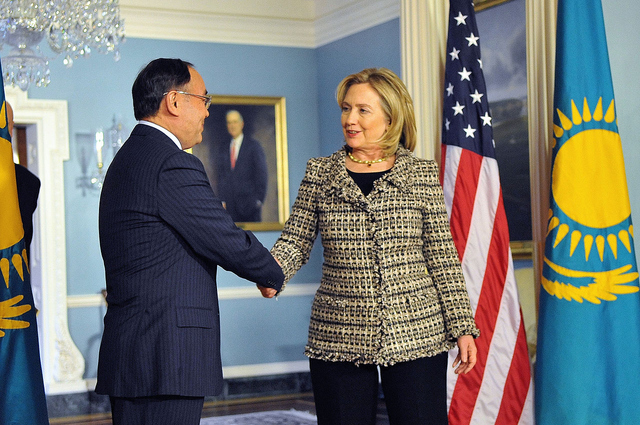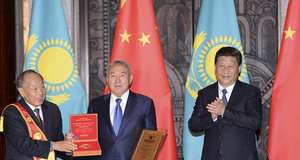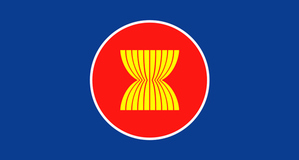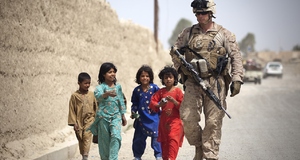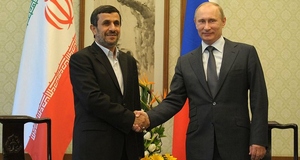From Cornell International Affairs Review VOL. 8 NO. 2Surveying the Challenges and Opportunities of America's Foreign Policy Toward Central Asia
IN THIS ARTICLE
KEYWORDS
America’s record of engagement in Central Asiai has been extensive during its post-9/11 era of adventurism. Between its vast military infrastructure and its explosive expansion of new commercial and security networks, the US has invested enormous resources in Central Asia in the last fourteen years. Consequently the US has financed repressive governments, ignited religious resistance groups, and exacerbated tensions with neighboring powers Russia and China. Indeed the US recalibrated its traditional foreign policy toward this region in order to pursue a forward operating position in the theater of Central Asia in support of the mission in Afghanistan. Yet with the continuing withdrawal from Afghanistan and its more recent commitment to an Asia-orientated foreign strategy, the US is on track to dramatically decrease its investment in the region. Inevitably, competing agendas will be aggressively maneuvering in the vacuum for greater regional influence. In light of these realities it remains vital for the US to restrain the mounting momentumfor disengagement and for policymakers to more concretely identify the US’ continued security, political and economic commitments to Central Asia. Failure to do so would, at best, undermine the stabilizing achievements the US has earned to date, or, at worst, render its investments worthless and further destabilize a strategically important region of the world. This article examines the US’ engagements in Central Asia and surveys a select number of challenges and opportunities ahead for US policymakers amidst the managed withdrawal from the region. This article goes on to selectively examine the US’ record of investments and particular interests that warrant monitoring in individual Central Asian states, regional and state specific challenges, and tools that can help promote more regional stability. This article also provides the following policy recommendations: that to promote greater stability in Central Asia, US policymakers should continue to emphasize economic development through regional and global market integration, support regional cooperation alongside evolving notions of state sovereignty, and encourage policies to address the political, social and religious grievances that give rise to Islamic extremism.Finally, this article recommends that for lasting stability the US should remain actively engaged in Central Asia by incorporating the republics as the western flank of America’s pivot policy toward Asiaii. U.S. Secretary of State Hillary Rodham Clinton shakes hands with Kazakhstan Foreign Minister Kanat Saudabayev, 25 January 2011. Photo: U.S. State Department. Surveying US Investment in the Northern Distribution NetworkIt was not until 2001 that significant US interests in Central Asia expanded beyond natural resources and the containment of nuclear materials left over by the former Soviet Union. By the end of 2001 the US was aggressively pursuing strategic alliances in Central Asia by offering significant financial incentives to secure military bases, air rights, and transitroutes necessary to facilitate Afghan operations. These routes through Central Asia became known as the Northern Distribution Network (NDN), which included transit and other logistical operations in Kazakhstan, Kyrgyzstan, Tajikistan and Uzbekistan. One of the US’ most significant tactical gains in the region was securing a lease to the Transit Center at Manas Air Base in Kyrgyzstan. Because it had to outmaneuver Russian opposition the lease came at a significant financial cost to the US, which included hefty lease payments, landing fees, infrastructure upgrades, and hundreds of millions of dollars per year in related purchases. Kyrgyzstan allowed the US a terminal lease at Manas from 2010 through 2014, but the agreement included a substantial rent increase from $17.4 million per year to $60 million per year.1 The US was also granted the use of the Karshi-Khanabad Air Base by the Uzbek government as a logistical base along the NDN that accommodated both air and land transport. US forces were similarly granted the use of the Dushanbe International Airport in Tajikistan for refueling purposes and the Almaty International Airport in Kazakhstan for emergency landings in 2002. However, in 2005 the US lost its permission to use the base at Khanabad and was ordered to vacate in retaliation for US criticism over the Uzbek government’s suppression of the Andijon demonstrations earlier that year. After the diplomatic rift in 2009 relations were partially repaired between the US and Uzbek governments after Uzbekistan, Kazakhstan and Tajikistan all agreed (with some caveats) to allow US forces to transit materials via both air and land into Afghanistan along the NDN. While Kazakhstan and Uzbekistan agreed weapons could be transported by air they only allowed non-lethal supplies to be transported by land. The Tajik government also agreed to allow the land transit of goods and supplies into Afghanistan, which is off the main route of the NDN and serves as an alternative route for a small percentage of supplies. Corresponding with the 2009 agreements, Kazakhstan saw the most dramatic percentage increase in US foreign aid, followed respectively by Kyrgyzstan, Uzbekistan, Turkmenistan and Tajikistan.2 Additionally, the US has paid several hundred millions of dollars per year in related goods and transit fees.3
See [5] for additional information on 2012-2015 US AID Foreign Assistance Energy, Aid, and Other InterestsBeyond military and security investments, US interests in Central Asia have primarily been in the areas of energy and aid. While its influence has been in decline due to increasing Chinese and Russian investment, US business interests still maintain a significant stake in Central Asian energy.6 The overarching issue for US energy activities has been how to get energy commodities out of landlocked Central Asia. The politics of pipelines seem as tangled as the routes themselves with each route presenting its own obstacles. US policy historically has been to cultivate opportunities in ways that bypass and isolate both Russia and Iran. The most significant US developments occurred in the 1990s with the unveiling of the Eurasian Transportation Corridor, which reflected a policy decision to encourage multiple pipelines out of Azerbaijan, Turkmenistan and Kazakhstan into Turkey without crossing Iran and giving Russia undue sway over the routes. Power sharing agreements have since declined in Central Asia in favor of joint ventures, which enable the host country or host business to establish ownership interests and simultaneously develop expertise in the enterprise. One of the more prominent US company joint ventures in Central Asia includes the Chevron-led Tengizchevroil Consortium, in which Kazakhstan’s state oil and gas company, KazMunayGas, has a twenty percent interest. Tengizchevroil output is exported through the Caspian Pipeline Consortium and the Trans-Caspian Transportation network. Full development of the Tengizchevroil, Karachaganak and Kashagan fields is expected to double existing production by the year 2019. While Turkmenistan has the second largest gas reserves in the world, foreign direct investment (FDI) has been minimal due to strict government control, corruption and underwhelming economic reforms. In addition, Uzbek reserves have also largely been closed to FDI from western sources. American trade with the Central Asian states has been greatest with Kazakhstan. In 2011 the US exported approximately $826 millionin goods, mostly machinery and transportation equipment, and imported approximately $1.7 billion, mainly in oil and minerals.7 US companies with notable trade investments in Kazakhstan include Boeing, FedEx, and a joint venture between GE and Kazakhstan. US trade with the rest of the four Central Asian states has been minimal in comparison. Over the past decade US aid to Central Asia has declined from approximately $328 million in 2002 to approximately $96 million in 2013.8 Kazakhstan has been the largest recipient of US aid among the five republics from 1992 through 2010, followed respectively by Kyrgyzstan, Tajikistan, Uzbekistan and Turkmenistan.9 A past focus of US aid to Kazakhstan had been the Comprehensive Threat Reduction program (CTR), which contained and eliminated post-Soviet nuclear materials. In contrast, US aid for 2014 emphasized peace and security, including anti-terrorism training and border controls, economic development and democratization.10 Previous US aid packages to Kyrgyzstan included humanitarian assistance, but future aid will be focused on supporting democracy and encouraging economic and governmental agency reforms.11 Tajikistan also received US aid for humanitarian assistance in the past, but future aid now focuses on combating Tajikistan’s serious drug trafficking challenges as the country contains popular transit routes between Afghanistan, Russia and China.12 Uzbekistan is the largest Central Asian state by population and has the most advanced military of the five countries; it devotes ten percent of its GDP to defense.13 Prior US aid to Uzbekistan focused on the CTR program, humanitarian assistance and democratization. In recent years major human rights violations by the Uzbek government have triggered a withholding of US aid. However, the State Department has biannually waived the withholding determinations on national security grounds.14 In light of regional security concerns, the US’ 2014 aid package to Uzbekistan was oriented toward security and anti-terrorism.15 Turkmenistan received the least amount of US aid in Central Asia and current appropriations focus on peace and se-curity, government reforms, economic growth and combating drug and human trafficking.16 Surveying the Central Asian StatesRegional stability is the primary US objective in Central Asia. However, stability can only be achieved with economic reforms in these former Soviet satellites, including greater economic integration with neighboring countries and world markets. Economic integration alsorequires states to implement reforms that discourage corruption in both the public and private sectors, and build business infrastructure that encourages legitimate enterprise with foreign direct investment. In addition to security countermeasures, stability will also require political and social reforms to provide dissenting and minority groups with religious, social and political freedoms in order to mitigate extremism. Finally, all five countries face security threats from forces within and outside their borders that have resulted in border disputes, interethnic animosity and Islamic extremism. KazakhstanThe president of Kazakhstan is known to exercise near comprehensive political power, with democratic elections and voting procedures questioned by an assortment of international organizations. Kazakhstan has scored poorly with human rights groups due to its significant restrictions on freedoms of speech, assembly and religion, and for the recent use of deadly force in response to an energy workers strike in Zhanaozen in 2011.17 Other issues such as human trafficking and the use of child labor in agriculture have also been problematic. While the Kazak government has made inroads in these areas it has still not addressed government participation in these activities.18 Economic development has been stifled by corruption, banking system irregularities, modernization failures, inadequate business and trade laws, overly restrictive regulations, and a deficiency in social spending in areas such as health and education, especially in rural areas. Further evidence of government corruption surfaced in 2011 when the Karachaganak Petroleum Operating (KPO), an oil and gas consortium, was forced to give ten percent of its shares to the Kazakh government in exchange for lifting heavy fines and duties.19 KyrgyzstanThe 2011 presidential election saw Kyrgyzstan’s first peaceful transfer of power. While the US indicated that the election was a step in the right direction, the Organization for Security and Cooperation in Europe (OSCE) still reported the results as questionable.20 Government corruption remains epidemic; there is no independent judiciary and there are serious shortcomings in legal due process. Significant restrictions remain on freedom of religion and there are continued instances of arbitrary arrests, torture, and extortion against ethnic minorities, especially amongst Uzbeks in southern Kyrgyzstan. The issues of human trafficking and child labor are national concerns. While the government has strengthened the laws onhuman trafficking no one has been prosecuted, and there is substantial suspected involvement by government officials in these activities.21 Economic development in Kyrgyzstan has been stifled due to public unrest over foreign backed projects, wide spread power outages and high prices for energy and gas. Foreign investment has declined and organized crime is again on the rise. Gold production, agriculture, and foreign remittances from Kyrgyz laborers in Russia are suspected of comprising a significant portion of the country’s GDP.22 TajikistanPolitical freedoms in Tajikistan remain problematic. The OSCE reported Tajik elections offer no genuine choices for candidates and report seriously improbable voter turnout figures.23 It is a felony to criticize the Tajik president and political opponents are prosecuted, including former minister Zayd Saidov who was arrested one month after establishing the New Tajikistan opposition party.24 Without an independent judiciary, Tajik citizens have few if any due process rights. Arbitrary arrests, torture, and abuse of detainees by the police have been widely reported by third parties.25 In addition, freedom of press and religion are highly restricted. For example, in 2009 the Tajik government banned prayer in unregistered cities; restrictions were further tightened in 2011 when the Tajik government forbade children from participating in religious services and banned preaching without a permit.26 In 2012 the government installed cameras in mosques and students are now required to obtain government permission to study abroad or have ties with foreign religious groups.27 As a result of these religious restrictions, international observers are becoming increasingly concerned that Islamic extremism is appealing as the language of opposition.Most Tajik citizens live in poverty. Human trafficking and forced labor during the cotton harvest remain issues. The country’s economy relies heavily on drug trafficking, foreign loans, and remittances from migrant workers. Tajikistan is a main route for drug trafficking from Afghanistan where drug proceeds are linked to high-level government corruption. The Economist even reported that drug money is likely propping up the Tajik economy.28 State ownership of land and major enterprises combined with a weak banking system serve to discourage private sector development. Other problems include a lack of spending on social programs, aging infrastructure, and a shortage of teachers, doctors and other core service providers. UzbekistanIn 2011 Uzbekistan was listed among the nine worst human rights abusers in the world.29 Democratic elections are illusory because opposition parties are prohibited from naming candidates. There are virtually no freedoms of speech, press, religion or assembly. Opposition members, journalists, and those who worship outside of state guidelines are subject to state prosecution. The media is state owned and there is massive censorship of television, the internet, cell phones and social media. In 2005 Uzbek troops reportedly killed hundreds of demonstrators protesting the prosecution of prominent businessmen accused of terrorism in the city of Andijon. The Uzbek government rejected international attempts to inquire into the circumstances of the jail break, the attack or the arrests of the individuals allegedly responsible. The Uzbek government even evicted the US from its military base in Khanabad following US criticism, which prompted the European Union to ban visas for those Uzbek officials perceived as responsible for the Andijon suppression.30 In 2006 Uzbekistan was classified as a Country of Particular Concern (CPC) by the US for severe religious and human rights violations, and, in 2009 the US Commission on International Religious Freedom (USCIRF) ranked Uzbekistan as among the worst countries for religious freedom.31 Like Tajikistan, Uzbekistan is also a source of human trafficking for the sex trade and forced child labor remains a national problem. Economically, the Uzbek government controls all export industries, including cotton, gold, and natural gas. Government seizure of foreign assets since 2010, strict border controls, and corruption have all led to a steep decline in foreign investment.32 TurkmenistanSimilar to Uzbekistan, Turkmenistan is ranked by Freedom House as one of the worst countries for human rights abuses.33 Politically, Turkmenistan remains mostly closed to Western influences. There are no democratic elections and only government approved candidates are eligible to run. The president exercises near comprehensive power and the country’s new constitution allows presidential rule by decree. Freedom of the press, assembly and religion are severely restricted, and torture or abuse by authorities is so widespread the US State Department estimates one in every two detained citizens has been subject to some form of government abuse.34 Turkmenistan remains both a source and a destination for human trafficking, and the government has demonstrated little advancement in victim protection. Nearly one-third of the population lives in abject poverty and state ownership of industry, corruption, and inadequate market reforms have further dissuaded foreign investment.35 Even though Turkmenistan has declared drug addiction a national catastrophe, the government has not developed an adequate response to these concerns and focuses its investments to- ward themilitary rather than social infrastructure.Continued on Next Page » Suggested Reading from Inquiries Journal
Inquiries Journal provides undergraduate and graduate students around the world a platform for the wide dissemination of academic work over a range of core disciplines. Representing the work of students from hundreds of institutions around the globe, Inquiries Journal's large database of academic articles is completely free. Learn more | Blog | Submit Latest in Political Science |

